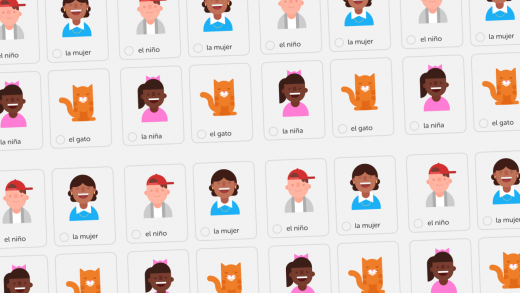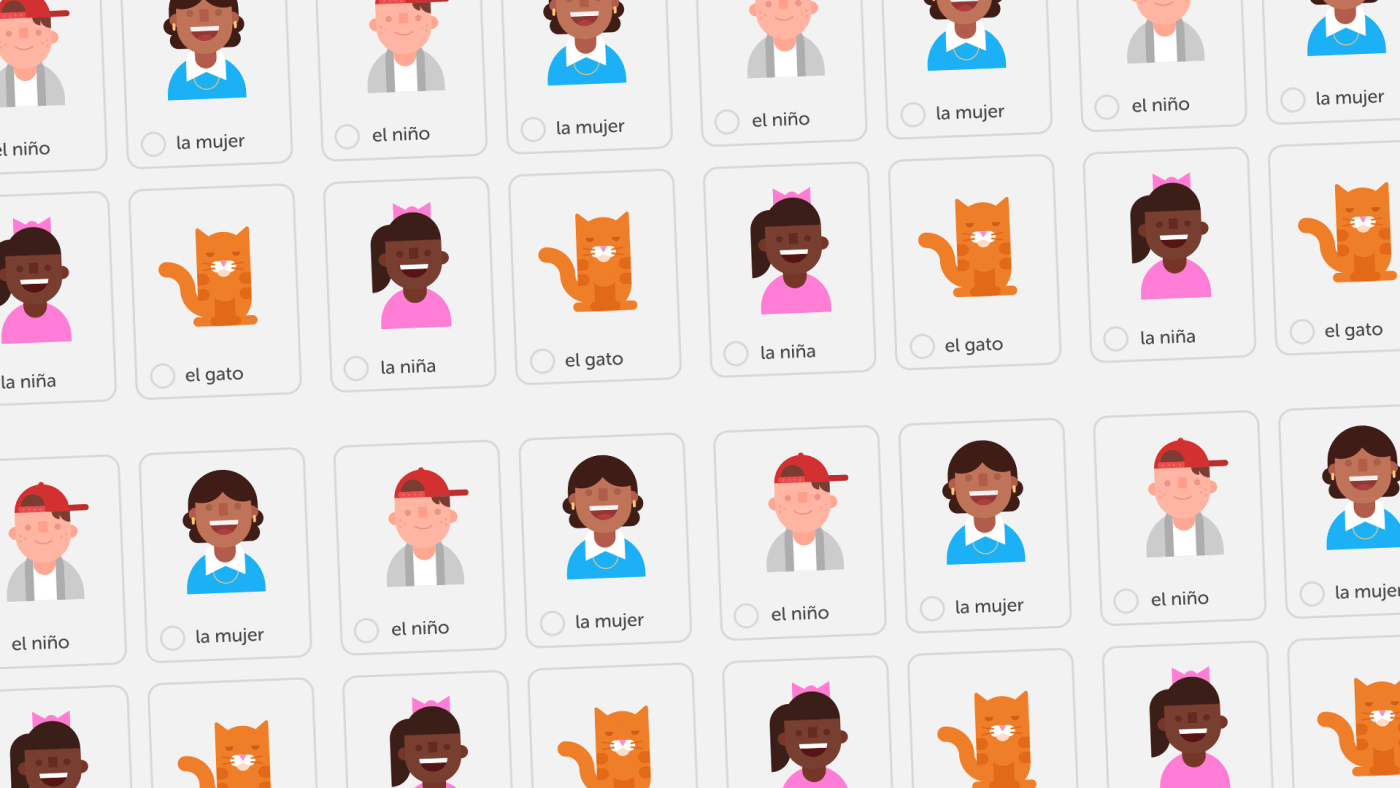Duolingo Suddenly Has Over Twice As Much Language Learning Material
With 25 million monthly active users, Duolingo has become an immensely popular language-learning app, for good reason. It offers free instruction in 31 tongues, and it’s genuinely fun, with whimsical cartoon characters teaching sometimes-hysterical phrases that keep learners entertained. (Fans have compiled lists on Twitter and Tumblr.) One of my favorites, from German, translates to “They are washing the holy potato.”
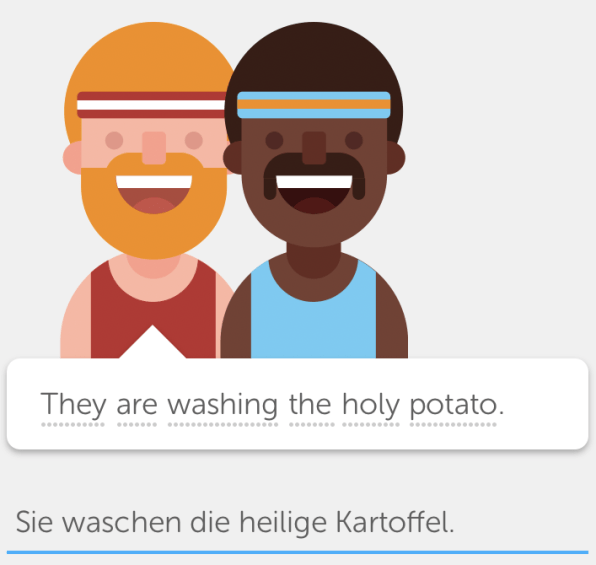
But until today, users have seen only part of the material the service had created, much of which it wasn’t actually presenting in the app. “I would say we were throwing out at least half of our content completely,” says Karin Tsai, the engineer who oversaw its new revamp. “Some sentences and exercises were just way too hard for users at the beginning level.” With its update, called Skill Levels, eager students have the option to do more-complex exercises, even from day one. Duolingo also announced that it’s working on additional exercises, such as reading and listening comprehension, that will roll out later this year.
More: Duolingo’s Chatbots Won’t Judge You For Your Lousy French
The app follows the common structure of teaching ever more advanced skills, starting with basic words and phrases like “Je suis un garçon,” and working up to complex topics like business and religion. In the past, if a skill section had been too long or complex, people would have gotten frustrated and dropped off. The new design gets around the problem by offering five levels for each skill, designated by crown icons. Students have to complete only the first level to move on to new skills; but if they want more practice on, say, the Spanish passive voice, they can now get it.
I tried the system in German, which I know well, and French and Spanish, in which I’m abysmal. Skill Levels solves one of my biggest language-learning problems: I forget stuff. (Perhaps I’m not alone.) Instead of having to go back over old exercises to refresh, say, my knowledge of Spanish food names, I can try a new level in that category, with new exercises and funny phrases, that reenforce the material.
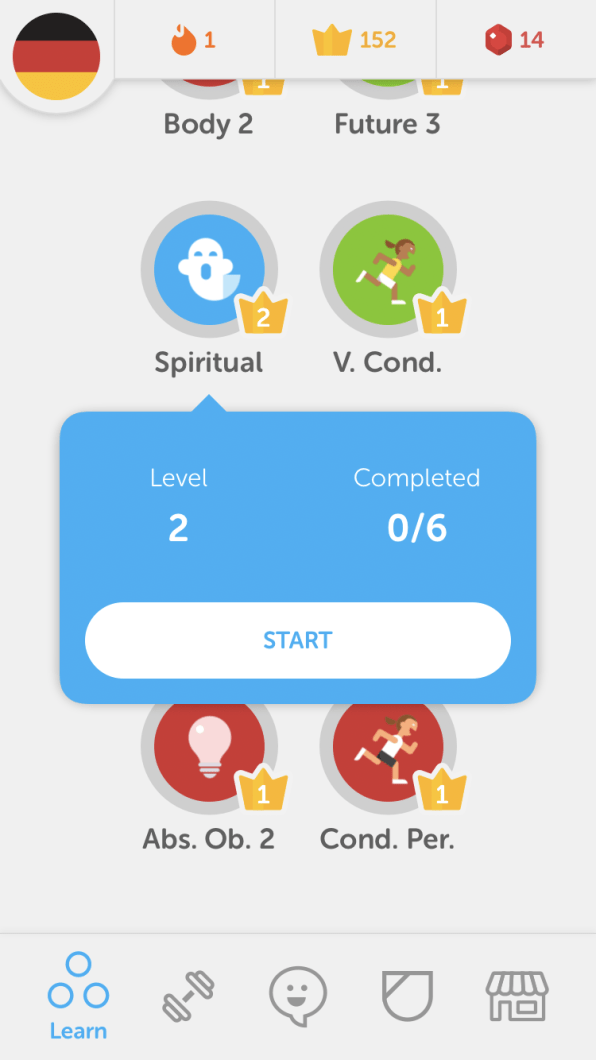
I can also push myself with more complex sentences and combinations of skills that teach those words or grammatical constructs. Before, Duolingo mostly asked users to translate sentences into the language they already knew because it was easier, for instance. Now they have more opportunities to practice translating in both directions if they choose to keep leveling up.
In December, Duolingo quietly seeded the new version of the app to a sampling of users, some of whom wrote excellent tutorials on the company’s message board. Despite confusion among some users, the results have been good overall, according to Tsai, with people spending more time on their language. “They are speaking it and writing it a lot more than they used to,” she says.
I do have one gripe with the interface. The number in the crown icon shows not how many levels someone has completed, but rather the one they are currently working on. Seeing a number “2” in the crown for the “Spiritual” skill in German, I thought I had already earned two crowns, but instead I was just starting work on the second crown.
More Ear Exercises Coming
Listening and speaking exercises have always been part of Duolingo, but it’s about to offer a lot more. Tsai’s team is working on a phonetics module, for instance. Learners will see a letter combination and choose, from a selection of audio clips, the correct sound they make. They’ll also listen to a sound and choose the appropriate letters. “We want to have phonetics challenges, starting in the French course, because French is a difficult language to pronounce,” she says, with a chuckle.
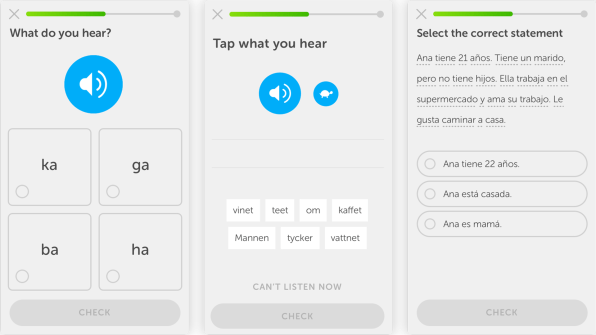
Duolingo will also add a similar feature, called Listen Tap, in which users hear an entire word and have to select from a multiple-choice list what they heard. Going even further, there will be listening comprehension exercises, in which students will hear someone speak several sentences and then answer questions about what they heard. There will also be written versions of the same exercises for reading comprehension.
One likely reason for Duolingo’s success is that it continues growing and reinventing, bringing in new languages, material, and exercises. In late 2016, for instance, it introduced chatbots that allow users to practice conversation with nonjudgmental robots before taking their fledgling skills to the streets. Earlier that year, it launched a flashcards app. With the new levels and coming audio exercises, the company shows a commitment to continue challenging and entertaining students, maybe even prompting some to exclaim “Holy potato!”
(62)

